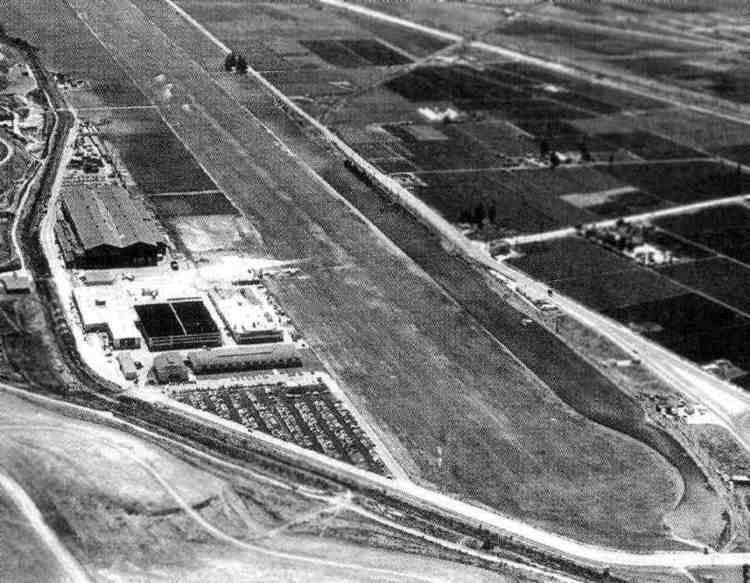Airport type Private Time zone PST (-6:00) | Closed 1986 (1986) Elevation AMSL 75 ft / 23 m Opened 1943 | |
 | ||
Location current day Playa Vista, Los Angeles | ||
The Hughes Airport (IATA: CVR) was a private airport owned by Howard Hughes for the Hughes Aircraft Company. It was located just north of the Westchester bluffs and district of Los Angeles, California, from 1940 until its closure in 1985. It was directly south of and along Jefferson Boulevard and Ballona Creek, the location of the present day planned community development of Playa Vista.
Contents
History
In 1940 Howard Hughes bought 380 acres (150 ha) of the Ballona wetlands south of Jefferson Avenue in south-west Culver City. A total of 9,600 feet (2,900 m) were available for a runway and an unpaved runway 23/5 was operational in 1943. In 1948 6,800 feet (2,100 m) were paved with asphalt, extended by 1962 to 8,800 feet (2,700 m). Takeoffs to the west had to be coordinated with nearby Los Angeles International Airport. The field served a number of aircraft and helicopter development projects of the Hughes Aircraft Co. and Hughes Tool Company (Summa Corporation).
Spruce Goose
The "Spruce Goose", officially known as the Hughes H-4 Hercules, was built here and moved in sections to the Port of Long Beach where it was re-assembled and made its first and only flight. Afterward, a climate controlled hangar was built there, where it remained until 1980 when it was acquired by the Aero Club of Southern California, which put it on display under a large dome next to the Queen Mary until 1988 when it was sold to the Evergreen Aviation Museum where it sits today. A full-time crew of 300 workers, all sworn to secrecy, maintained the plane in flying condition in a climate-controlled hangar at Hughes Airport. The crew was reduced to 50 workers in 1962 and then disbanded after Hughes's death in 1976.
By the mid-1990s, the former Hughes Aircraft hangars here, including the one that held the Hercules, were converted into sound stages. Scenes from movies such as Titanic, What Women Want, and End of Days have been filmed in the 315,000-square-foot (29,300 m2) aircraft hangar where Hughes created the flying boat. It also features in the computer game Crimson Skies. The hangar will be preserved as a structure eligible for listing on the National Register of Historic Buildings.
Current Usage
The former Hughes Airport is currently occupied by The YouTube Space LA, part of the Playa Vista development.
